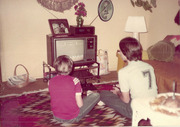View Post [edit]
| Poster: | Javik | Date: | Nov 25, 2006 6:15pm |
| Forum: | petabox | Subject: | 24-drives on one SAS channel, from SuperMicro |
This post was modified by Javik on 2006-11-26 02:15:04
Reply [edit]
| Poster: | Javik | Date: | Nov 25, 2006 6:14pm |
| Forum: | petabox | Subject: | Oh look, the first ever 2.5 inch SAS hard drive |
This post was modified by Javik on 2006-11-26 02:14:07
Reply [edit]
| Poster: | Javik | Date: | Nov 29, 2006 12:34pm |
| Forum: | petabox | Subject: | Re: Make that --144-- 2.5" drives on one SAS channel |
If you take a look at the manual for the E1/E2 chassis you will see that it's not limited to 24 drives, but in fact up to 144 drives:
http://www.supermicro.com/manuals/other/CSE-M28E1-E2.pdf
Page 4 says:
w/potential support of up to 144 SAS devices (*Note)
*Note: The availability of SAS-devices supported depends on the readiness of firmware and hardware support. The firmware support and the hardware support for SAS devices are not validated at the time of publishing of this manual. It's subject to change.
And it seems that the main difference between the E1 and the E2 is that, as with the SC933 in my other post, the E2 has a redundant data channel to be used with SAS hard drives that have dual I/O ports on them.
So it looks to me that if you were to use just cheap SATA-II drives, you only need the E1 SAS backplane, as cheap SATA-II drives don't have the redundant I/O port available on the hotplug connector in the E2 chassis.
On page 8 of the backplane diagram, the E1 just has the four ports on the right side. The E2 has both the four on the right and the four on the left.
When cascading (daisy-chaining) the E1 chassis, two ports go to the SAS controller, and two ports are pass-through to the next E1 chassis.
When cascading (daisy-chaining) the E2 chassis, two ports go to one SAS controller, two ports to a second SAS controller, and four ports are pass-through to the next E1 chassis.
Meanwhile, if you only use one chassis, you can use all four (on the E1) or all eight (on the E2) to connect the single chassis to a single SAS card, though why you might do this is not explained.
I am assuming that when multiple SAS channels are used in parallel, it gives better performance. Perhaps it permits parallel drive accesses at 3.0Gbit, but again it is not explained.
An engineering degree in SAS technology may be required to understand all the hardware options available here. :-)
-Javik
 Live Music Archive
Live Music Archive Librivox Free Audio
Librivox Free Audio Metropolitan Museum
Metropolitan Museum Cleveland Museum of Art
Cleveland Museum of Art Internet Arcade
Internet Arcade Console Living Room
Console Living Room Books to Borrow
Books to Borrow Open Library
Open Library TV News
TV News Understanding 9/11
Understanding 9/11